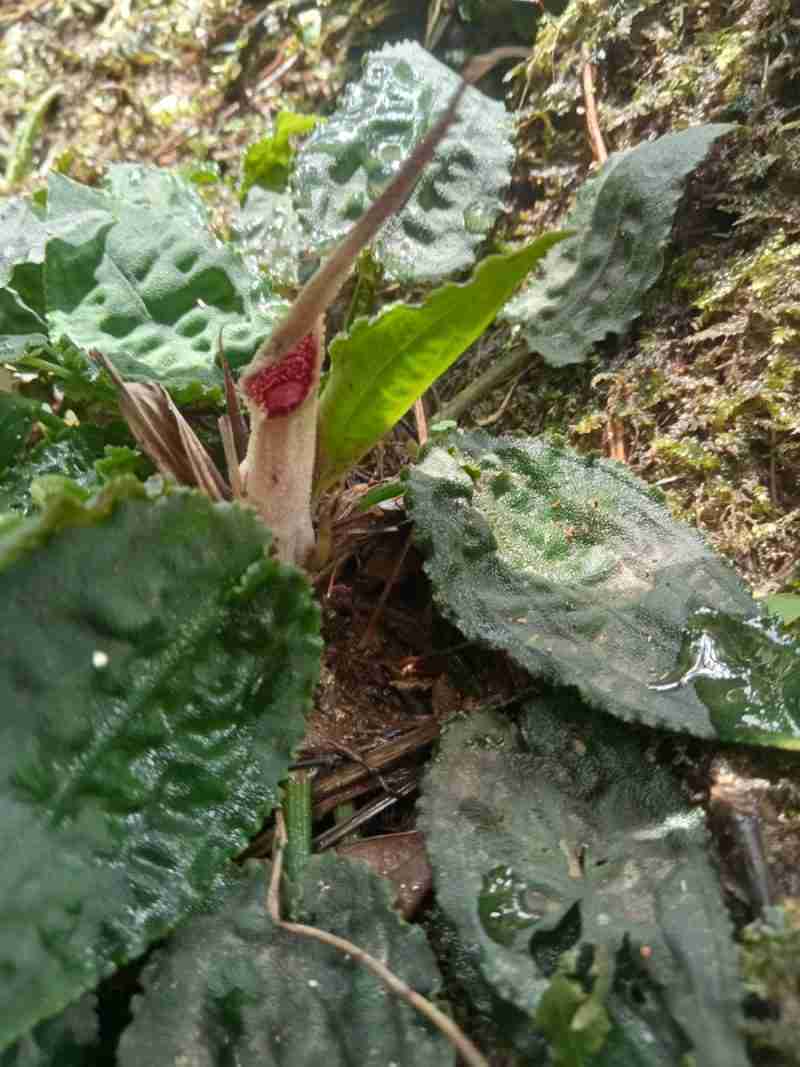The island of Mindanao in the Philippines is a land of great natural beauty with lush forests crystal-clear rivers and a rich array of wildlife. One of the fascinating species found in this region is the Cryptocoryne Esquironii “red spathe Zamboanga del Norte” commonly known as the red spathe Cryptocoryne.
This aquatic plant belongs to the family Araceae and is native to the province of Zamboanga del Norte. It thrives in the calm shallow waters of streams rivers and marshes where it grows among the mud and sand. The plant is also commonly found in rice paddies and other wetlands.
One of the most striking features of the Cryptocoryne Esquironii “red spathe Zamboanga del Norte” is its vibrant red spathe which stands out against the plant’s green foliage. The spathe is a modified leaf that surrounds the spadix a long slender structure that contains the plant’s flowers. The red color of the spathe is a result of the presence of anthocyanins pigments that give many plants their bright hues.

Photo courtesy Levi Paggao and Edilberto Ponteras
The plant’s leaves are broad and oval-shaped with a glossy green surface that reflects the light. They are held on long thin stalks that rise from the substrate and can reach up to 30 centimeters in height. The roots of the plant are thin and delicate and they spread out through the substrate in search of nutrients.
To thrive in an aquarium setting the Cryptocoryne Esquironii “red spathe Zamboanga del Norte” requires specific conditions. The plant prefers soft slightly acidic water with a pH between 6.0 and 7.0. The ideal temperature range for the plant is between 22°C and 28°C. It is also essential to ensure that the water is well-aerated and that there is a good flow of water through the tank.
The plant’s substrate should consist of a mixture of sand and clay with a depth of at least 5 centimeters. The substrate should be nutrient-rich with a good supply of iron magnesium and other essential minerals. Adding a layer of peat moss or coconut coir to the substrate can also help to create an ideal environment for the plant.
In terms of lighting the Cryptocoryne Esquironii “red spathe Zamboanga del Norte” prefers moderate to low levels of light. Bright direct sunlight can damage the plant’s delicate leaves so it is important to place the aquarium in a shaded area. Supplemental lighting can be used to provide the plant with the right amount of light if natural light is insufficient.
In the home aquarium, the Cryptocoryne Esquironii “red spathe Zamboanga del Norte” is an excellent choice for aquarists of all levels of experience. The plant is relatively easy to care for and can add a beautiful vibrant element to any tank. To ensure the plant’s health and vitality it is essential to provide it with the right conditions and to monitor its growth regularly.
Regular water changes substrate maintenance and the addition of fertilizers can help to ensure that the plant remains healthy and vibrant. It is also important to keep an eye out for any signs of disease or stress such as yellowing leaves or wilting.
Cryptocoryne Esquironii “red spathe Zamboanga del Norte” is a fascinating and beautiful aquatic plant that is native to the island of Mindanao in the Philippines. Its vibrant red spathe and glossy green leaves make it a striking addition to any home aquarium. To keep the plant healthy and thriving it is essential to provide it with soft slightly acidic water a nutrient-rich substrate and moderate to low levels of light. With the right care and attention, this plant can be a wonderful addition to any aquarium and can provide a stunning focal point for your tank.
Cryptocoryne Esquironii “red spathe Zamboanga del Norte” is a slow-growing plant and can take some time to establish itself in the aquarium. It is important to be patient and not to disturb the plant during the establishment period. Once the plant has established itself it will begin to spread its roots and send out new shoots creating a beautiful and natural-looking underwater landscape.
One of the benefits of Cryptocoryne Esquironii “red spathe Zamboanga del Norte” is that it is an excellent choice for aquarists who are looking to create a natural low-maintenance tank. The plant is hardy and can tolerate a wide range of water conditions making it an excellent choice for beginner aquarists. Additionally, the plant is relatively easy to propagate and new plants can be grown from cuttings or runners.
For those interested in growing Cryptocoryne espirito santensis ‘Red Spathe’ at home HomeTissueCulture.com offers a tissue culture book sold on Amazon that contains everything you need to know to cultivate this plant. Tissue culture is a great way to propagate plants and create a sustainable supply for the aquarium hobby. Cryptocoryne is an aquarium plant that can be emersed grown and we talk about that in another article here on Biotope One.
In terms of placement in the aquarium, Cryptocoryne Esquironii “red spathe Zamboanga del Norte” is a versatile plant that can be used in a variety of ways. It can be placed in the foreground or midground of the tank and it can also be used as a background plant if trimmed regularly. The plant is also an excellent choice for aquascaping as its vibrant colors and unique shape can be used to create striking underwater landscapes.
Cryptocoryne Esquironii “red spathe Zamboanga del Norte” is a fascinating and beautiful aquatic plant that can add a touch of color and vibrancy to any home aquarium. Whether you are a beginner aquarist or an experienced hobbyist this plant is an excellent choice for anyone looking to create a natural low-maintenance tank. By providing the plant with the right conditions and care you can ensure that it thrives and adds beauty to your aquatic environment for years to come.
 Biotope One A Study of Flora and Fauna
Biotope One A Study of Flora and Fauna 


